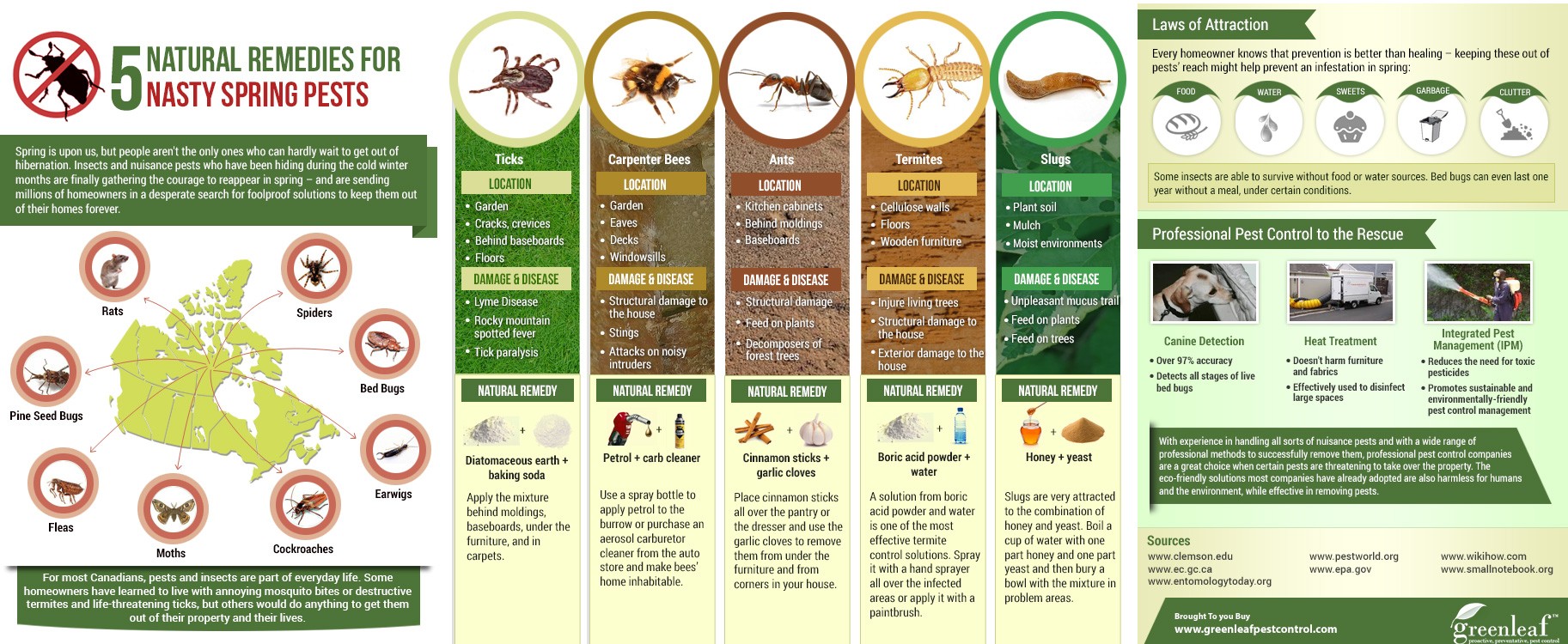Protecting Your Outdoor Place: Effective Methods For Keeping Rats At Bay
Protecting Your Outdoor Place: Effective Methods For Keeping Rats At Bay
Blog Article
Post Written By-Christensen Lemming
Did you know that rats can press through openings as small as a quarter? Picture the implications for your outside space. From munching on plants to nesting in comfy corners, these parasites can create chaos if given the possibility. Yet worry not, there are useful techniques you can utilize to keep your backyard rodent-free. By taking simple steps to secure entrance points and preserve a neat setting, you can create a citadel against undesirable fuzzy site visitors. So, are you all set to guard your outside place from these pesky intruders?
Identify Access Information
To successfully rodent-proof your outside space, start by identifying prospective entrance factors. Inspect https://should-i-remove-father-ra61615.blogdun.com/27619627/recognizing-regular-indications-of-termite-task-in-your-home-an-extensive-manual for any type of spaces or openings that rats might make use of to get. https://isdarkcometratremoversafe62849.livebloggs.com/33219222/prepare-to-change-your-home-into-a-pest-free-refuge-with-environmentally-friendly-environment-friendly-bug-control-options-making-sure-a-healthier-setting-for-your-family-and-the-earth as spaces under doors, holes in the walls, or openings around energy infiltrations. Keep in mind that computer mice can squeeze via holes as small as a cent, so be complete in your examination.
Concentrate on areas where energies enter your home, such as where pipes, cables, or cables enter the building. Seal any kind of spaces around these access points with products like steel wool or caulk. Furthermore, check for any type of splits in the foundation or gaps in the house siding that can serve as access factors for rodents.
Pay very close attention to locations where plant life satisfies your home, as overgrown plants can provide concealing areas and easy access for rodents. Trim any kind of looming branches or bushes that could be utilized as bridges to your house. By determining and sealing these entrance factors, you can considerably minimize the opportunities of rodents attacking your exterior space.
Implement Exemption Measures
Inspecting and securing access points is the initial step in rodent-proofing your outdoor area; currently you'll do something about it by carrying out exclusion steps.
Start by setting up door brushes up on all exterior doors to prevent rodents from pressing with gaps. Seal cracks and holes with weather-resistant sealer, concentrating on areas where utility pipelines enter your home.
Usage cord mesh to cover vents and smokeshafts, guaranteeing they're securely connected. Trim tree branches and plant life away from the house to get rid of possible bridges for rodents to access your roof.
Furthermore, take into consideration setting up steel blinking around the base of your home to stop burrowing. Shop fire wood a minimum of 18 inches off the ground and far from your house.
Maintain https://www.nbc11news.com/2023/04/21/denver-zoo-rescues-animals-closed-zoo/ in snugly secured containers, and quickly clean up any type of spilled birdseed or animal food. By implementing these exemption actions, you can significantly reduce the likelihood of rodents attacking your outdoor space.
Maintain Cleanliness and Trimmed Landscaping
Guarantee your exterior room remains clean and your landscape design is on a regular basis trimmed to prevent rats from discovering harborage or food sources. Maintaining your lawn clean is essential to reducing tourist attractions for rats. Eliminate any kind of debris, clutter, or unused items that could work as concealing areas for these pests. Rodents are attracted to areas with simple access to food and sanctuary, so by preserving cleanliness, you make your property much less attractive to them.
Consistently trimming your landscape design is also vital in rodent-proofing your outdoor room. Overgrown plants provides rats with sufficient hiding places and potential nesting sites. By maintaining your yard trimmed, shrubs cut, and trees pruned, you eliminate potential habitats for rodents. In addition, cut landscape design makes it harder for rats to access your home as they choose locations with ample coverage for protection.
Conclusion
In conclusion, by making the effort to rodent-proof your outdoor space, you can make sure a pest-free yard for years to come. Remember to regularly check for entry factors, carry out exemption actions, and keep your yard tidy and well-maintained.
With these easy approaches in place, you can delight in a relaxed and rodent-free exterior environment. So, do not delay - start rodent-proofing today and bid farewell to undesirable animals in your yard!
